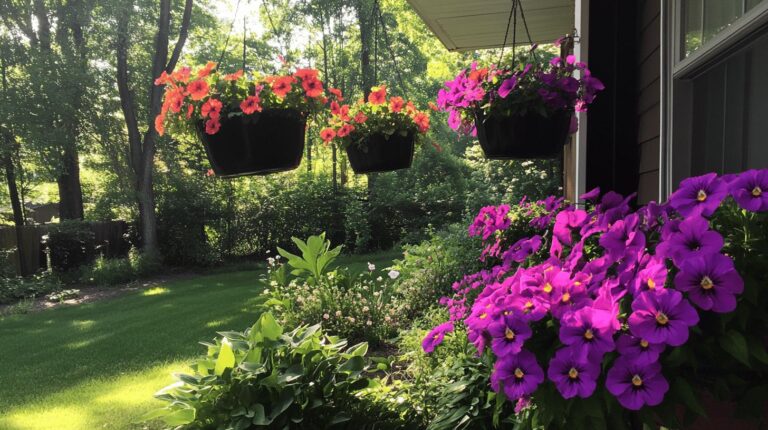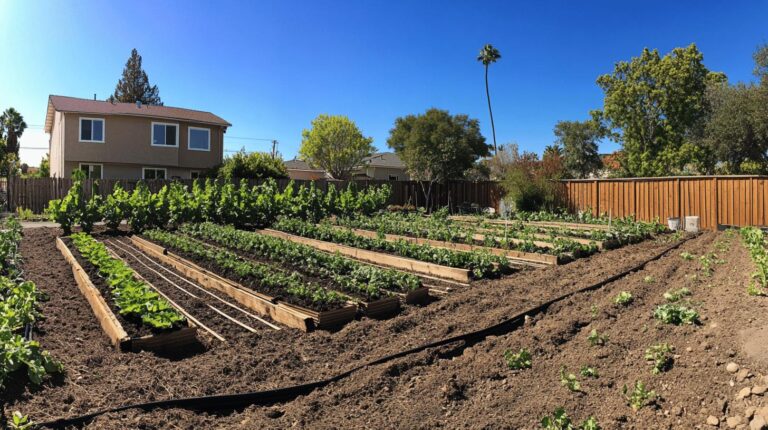How To Start An Organic Vegetable Garden Effortlessly
Ever wondered why store-bought tomatoes taste so flat? Have you ever smelled the first sweet whiff of a homegrown tomato? Imagine kneeling in your yard, warm earth crumbling between your fingers, and pulling a sun-warmed tomato right off the vine. I know it sounds like extra work, but growing your own organic veggies can be easy and even calming.
Here’s how you get started in five simple steps.
Step 1. Pick a spot that gets at least six hours of sun.
Step 2. Feed your soil with compost (decayed organic matter that enriches soil) so it feels soft and sponge-like.
Step 3. Plant seeds or tiny seedlings in neat rows. Oops I meant small seedlings most of the time.
Step 4. Guard against pests with a mild soapy spray or by handpicking.
Step 5. Snag your first crisp tomato and celebrate.
By planting now you’re setting yourself up for a summer harvest.
Let’s dig in!
Five Phases of Starting an Organic Vegetable Garden
Phase 1: Pick Your Patch
Feel the warm sun on your skin and the earth crumbling between your fingers. Find a spot that soaks up at least six hours of sun, drains well (won’t hold puddles), and sits near a hose or water bucket. By the way, my cat can’t resist napping here!
Phase 2: Nourish the Soil
Sprinkle in a couple inches of compost (decayed organic matter that enriches soil) or aged manure. Mix it in with your hands until the soil feels loose and moist. Your veggies will grow strong roots and crisp leaves.
Phase 3: Plan and Plant
Lay out rows or beds so each seed or seedling has its own spot. Ever held a fresh seed packet in your hand? It’s kind of thrilling, you know? Plant at the depth the packet suggests and give each plant room to stretch.
Phase 4: Care and Protect
Water gently so the soil stays damp but not soggy. Add a layer of mulch (a covering that locks in moisture and tames weeds). Try companion planting (growing friendly plants together for pest defense) and spray neem oil (natural pest spray) only when bugs show up. Rotate your crops (switch plant families each season) to keep soil happy.
Phase 5: Harvest and Celebrate
That moment when you snap a ripe tomato is pure joy. Share a fresh salad with friends and savor the taste of your hard work.
Choosing the Perfect Spot for Your Organic Vegetable Garden
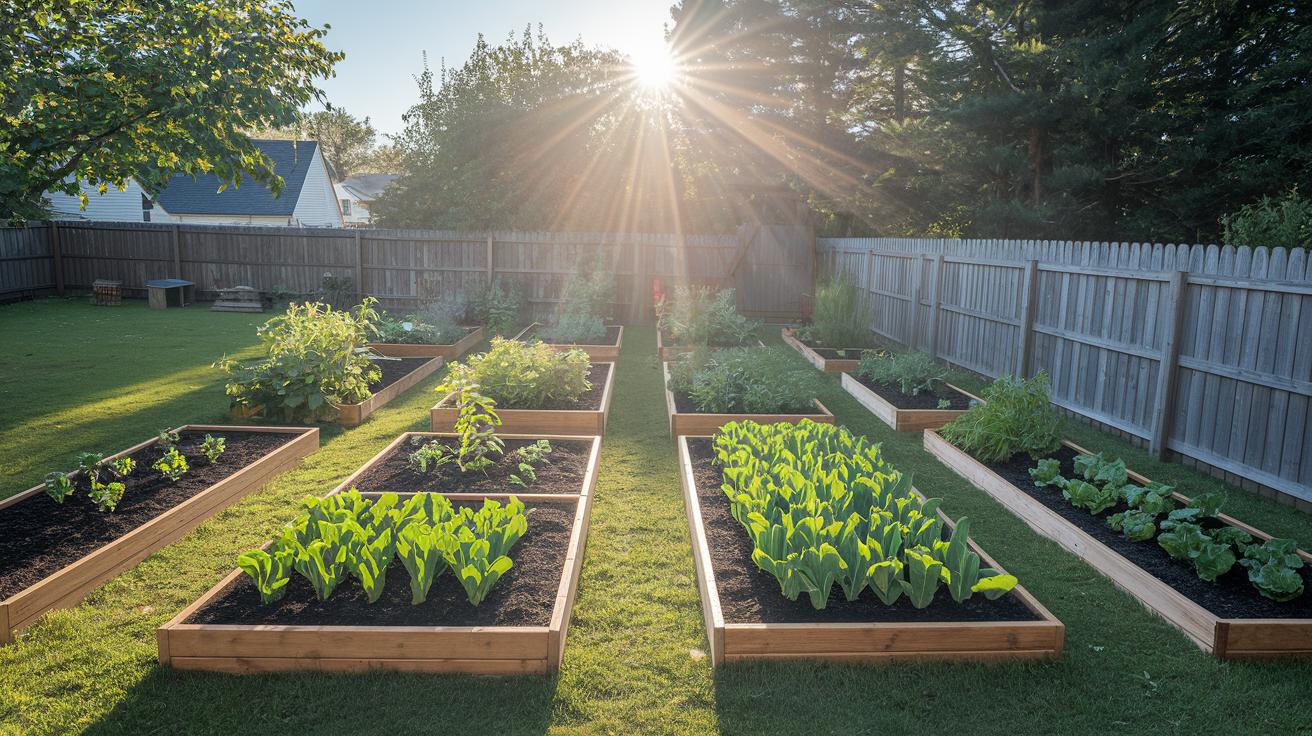
Pick a sunny patch that wakes with the soft glow of morning sun. It should soak up six to eight hours of light.
And steer clear of low spots where rain puddles form. Plants really hate wet roots.
Line your beds north to south so every seedling gets even sun all day. Then give each row about 18 to 24 inches of breathing room for good airflow (circulation of air around plants).
Aim for a gentle slope – it helps rainwater run off instead of turning your garden into a muddy pool.
Keep your garden near an outdoor faucet (spigot) or a rain barrel (a barrel that collects roof runoff). Filling a watering can should be a quick stroll, not a two-block hike. Oops, learned that the hard way!
Preparing Soil and Compost for Organic Vegetable Gardening
First, let’s test your soil for pH (a measure of acidity or alkalinity) and key nutrients. You’re aiming for a slightly acidic to neutral range, 6.0 to 7.0 pH. Soil tests take the guesswork out of feeding your plants. If your results come back off, follow how to adjust soil pH after testing.
Next, spread 2 to 3 inches of well-rotted compost (decayed organic matter that enriches soil) or aged manure over your bed. Give it a sniff, good compost smells earthy, not sour. Then, work it into the top 6 to 8 inches of soil with a fork or shovel. You’ll feel the warm earth crumbling between your fingers.
Now let’s build a simple compost pile. Layer kitchen scraps (greens) and yard waste (browns) in roughly equal amounts. Turn the pile every week or two with a pitchfork to speed up decay. Before you know it, you’ll have rich compost ready to feed your veggies.
Oh, and have you tried vermicompost from red wiggler worms? These little wrigglers turn kitchen scraps into black gold full of helpful microbes. Mix a few handfuls into each bed before planting for a quick microbial boost.
Planting now sets you up for a summer harvest.
Selecting Organic Seeds and Seedlings for Your Vegetable Garden
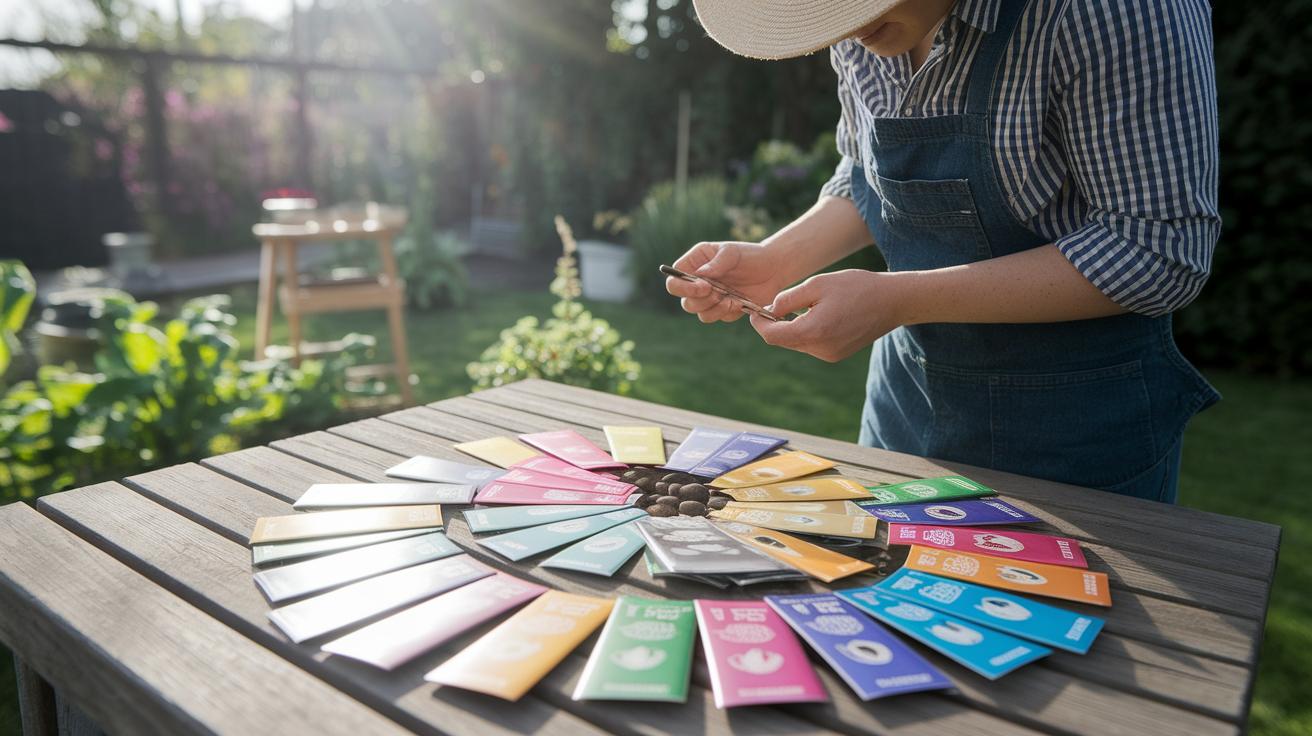
Have you checked your plant hardiness zone (the map that shows how cold your winters get)? It’s key to picking seeds or seedlings (young plants) that won’t freak out when they hit your garden. Warm days but cool nights? Just match that info on the back of the packet.
And heirloom seeds (old varieties passed down for flavor) are a gem. They often come from neighbors or small farms. I still remember the first sweet carrot I grew from a hand-me-down seed, wow.
But don’t forget hybrids (crossbred seeds made for traits). They usually shrug off disease and give you a steady harvest. The catch? If you save those seeds, next year’s plants might surprise you.
If you want zero guesswork, go certified organic (no synthetic pesticides). Look for trusted labels or swing by your local seed library. It takes the mystery out of a clean, green garden.
By the way, seeds tested in your area can really boost your odds. Farmers and co-ops run trials right in your climate. So you get plants that’ve already proven themselves close to home, less guesswork, more growth.
Designing Your Organic Garden Layout: Raised Beds, Containers & Vertical Systems
Have you ever sketched your garden on paper or even in the dirt? Start by watching how the sun slides across your yard all day. Note those sunny spots. And leave a wide path for wheelbarrows and watering cans, it makes weeding a breeze later.
Raised bed (a garden bed built above ground) gardening feels like giving your veggies a comfy sofa. I aim for beds about 3 to 4 feet wide so I can reach the middle without stepping on the soil. Mine stretch up to 12 feet long so I can plant in neat rows. Use rot-resistant wood (wood that resists rotting) or galvanized steel (steel coated in zinc). Then add at least 2-foot paths between beds for tools and airflow. Your plants will thank you with fewer fungus worries.
Container garden (plants in pots) magic turns patios or tiny corners into a mini-farm. I grab 5-gallon (or larger) pots with extra drainage holes. Fill them with organic potting mix rich in compost (decayed organic matter that enriches soil). That loose soil smells amazing. Plus you can move pots around to chase the sun.
Climbing vines love a ladder too. Set up a trellis (a frame for climbing plants) or a tomato cage for cucumbers, peas, and beans. These vertical veggie systems save ground space. And you get cleaner fruit instead of muddy messes.
In chilly weather your secret helper is a cold frame (a small greenhouse-like box). Slip young seedlings (baby plants) inside to trap warmth and guard against frost. That means an earlier spring start and a later goodbye for leafy greens. Happy growing!
Implementing Organic Pest and Disease Control in Your Vegetable Garden
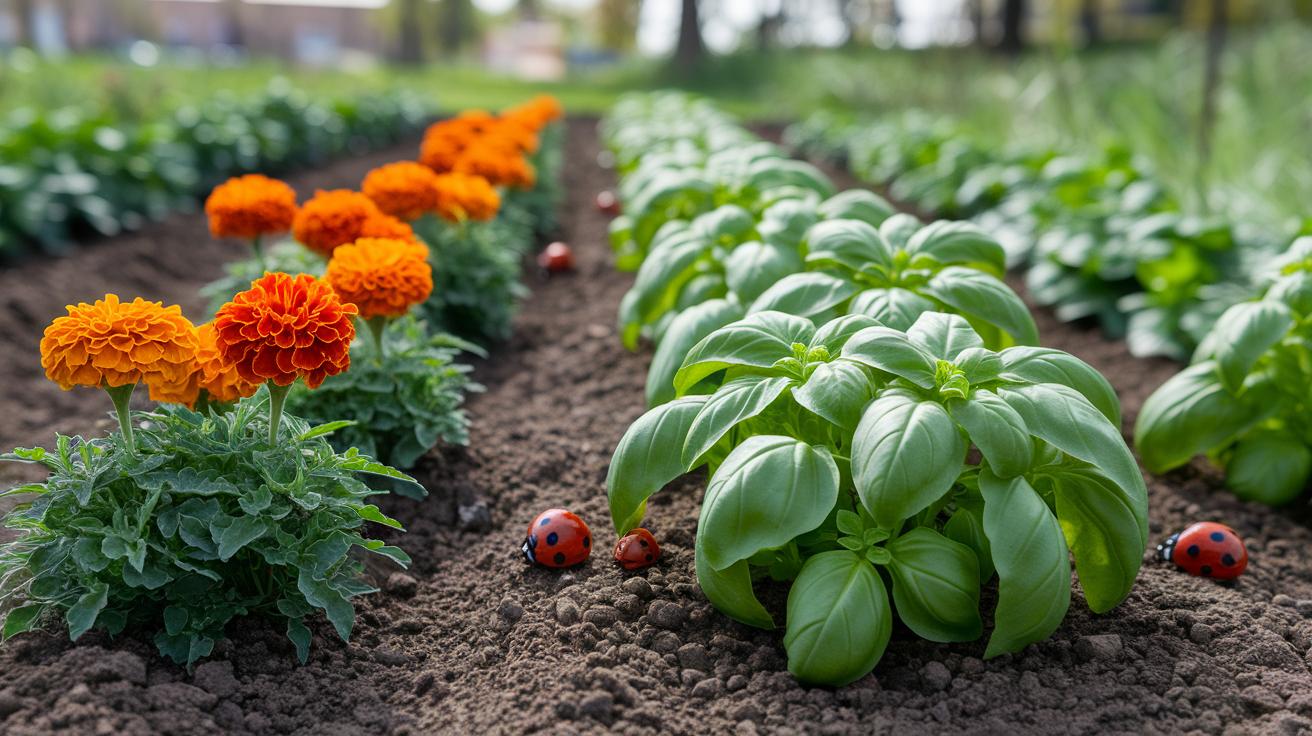
Rotate plant families each season. It’s like mixing up a deck of cards so hungry insects get confused and soil-borne diseases can’t build up. The earth feels fresh and ready for new crops.
Here’s a companion planting trick. Tuck scent-strong pals like basil (sweet, peppery herb) or marigolds (bright, cheerful flowers) among your tomatoes. Aphids and whiteflies can’t stand that aroma. And plant chives (onion-y green stalks) or nasturtiums (edible flowers) by cabbage to scare off cabbage worms.
When you see beetles or caterpillars, grab them by hand and drop them into a bucket of soapy water. By the way, I once found a big green caterpillar on my lettuce, surprise! Next, drape row covers (light fabric that shields seedlings) over your plants to block flea beetles and cabbage worms. If a few bugs still slip through, spray neem oil in the cool morning or evening. Test on one leaf first and watch how your plant reacts.
You can also mix your own gentle spray. Stir together a few drops of mild dish soap, a splash of vegetable oil, and water. Give it a good shake before each use so the oil stays suspended. Then mist your leaves.
For powdery mildew (white fungus that looks like flour on leaves), treat spots with a baking soda spray or a copper-based organic fungicide. Aim under the leaf surface where spores like to hide.
Here’s a quick toolkit:
- Insecticidal soaps and neem sprays for organic pest control
- Flowers like alyssum to attract ladybugs and lacewings (beneficial insects)
- Crushed eggshells or coffee grounds around young shoots to keep slugs away
- Nematodes (tiny worm-like creatures) to tackle root maggots
For tips on weed-free beds without chemicals, see organic weed control methods for vegetable gardens. Growing in pots? Check natural pest control methods for container gardens.
Efficient Watering and Mulching for Your Organic Vegetable Garden
Think of water like breakfast for your plants. You’ll want about 1 to 1.5 inches of water each week right at the root zone (the soil area around the roots). Have you ever smelled basil after a good drink? Drip irrigation (a system that drips water slowly to the roots) or soaker hoses (a flexible tube that seeps water along its length) work like magic. They cut waste and deliver moisture exactly where your plants need it!
Here’s a quick look at irrigation options:
- Drip tape (thin tube that drips water slowly to roots) – low flow, gentle coverage, mid-range cost
- Soaker hoses (hose that seeps water along its length) – even soak, easy install, budget friendly
- Overhead sprinklers (spray water from above) – wide reach, higher evaporation, more expensive
I like to bury soaker hoses under about 2 inches of mulch. It tucks the hoses out of sight and slashes evaporation.
Guys, mulch is your secret weapon.
By the way, rainwater harvesting is a neat trick. Just set barrels under downspouts to catch roof runoff. That free water is chemical-free and easy on your wallet.
Mulch does more than hide hoses. Spread 2 to 3 inches of organic mulch (a soft layer of straw, leaves, or grass clippings) to lock in dampness and keep weeds at bay.
Organic mulch materials:
- Straw
- Leaf mold (partly decayed leaves that look crumbly)
- Grass clippings
Oops, almost forgot grass clippings…
With mulch in place and a steady drip system, you’ll water less by hand and watch your veggies thrive all season.
Crop Rotation, Succession Planting & Seasonal Care in Your Organic Vegetable Garden

Rotate plant families each year. Your soil will get a break from the same roots. For example, swap brassicas (plants like broccoli and cabbage) for beans, and then follow beans with nightshades (tomatoes and peppers) next season. This simple shuffle keeps nutrients balanced and cuts down on soil-dwelling pests and diseases.
Succession planting helps you pick fresh veggies all season long. I like to sow small batches of lettuce, radishes, and beans every two or three weeks. Soon, you’ll be snipping crisp radish rounds from older rows while tender seedlings peek up beside them. Yum!
In fall, cover cropping is my go-to for winter garden care. Cover crops (plants that protect and feed soil) like clover or vetch work wonders. Scatter the seeds over empty beds, and they’ll tug nitrogen (natural plant food) from the air into your soil, all while making the earth fluffy and friendly for spring.
Think of those cover crops as green manure (natural fertilizer). When spring nears, chop or till them into the soil about six weeks before planting warm-weather veggies like tomatoes. Oops, I forgot once and planted too soon, plants got a slow start. Give it time, and those chopped plants decompose into rich food for your hungry roots.
Your seasonal planting guide is like a calendar compass. Note your first-frost and last-frost dates. In late summer, tuck cold-tough greens under row covers (light fabric tunnels) for an extra early harvest. Then in spring, wait until the frost risk has really slipped away before moving out tomato and pepper seedlings. You’ll see them stretch skyward with vigor.
Harvesting and Storing Vegetables from Your Organic Vegetable Garden
Have you ever held a tomato that’s glowing red and feels firm under your palm? That’s the exact moment to pick it. And when it gives just a little under your fingers, you know it’s perfectly ripe.
For cucumbers, wait until they’re 6 to 8 inches long and have a satisfying crunch when you bite. Carrots are ready when their tops swell to about three-quarters of an inch across. Then lift them gently so you don’t snap the tip.
For squash and peppers, grab a pair of sharp shears (pruning scissors) and snip them right off the vine. A clean cut helps the plant heal and keeps it producing more goodies.
Leafy greens like lettuce or spinach love hanging out in the fridge. Lay them flat between damp paper towels inside a sealed container (airtight container) set at about 32 to 36°F. They’ll stay crisp for up to a week.
Got extra beans, peas, or carrots? Let’s do a quick blanch (brief boil). Drop them in boiling water for one minute, then scoop them out and plunge them into cold water. Drain well and pack into freezer bags. This locks in their fresh flavor and nutrients.
Thinking long-term? Follow USDA steps for home canning. Or dry tomatoes and peppers until they’re shriveled, then tuck them into jars. You’ve got garden gifts that last for months. Oops, almost forgot, label your jars with the date so you’ll know when you made them!
Final Words
Digging into these five simple steps, you’ll pick a sunny, well-drained spot and build rich soil with compost. Then you’ll plant certified organic seeds or seedlings, water, mulch, and gently manage pests with natural methods. Rotate crops each season and harvest regularly for fresh, frequent yields.
By testing and amending your soil, choosing the right layout, and welcoming helpful insects, you’re crafting a thriving, chemical-free garden.
Now that you know how to start an organic vegetable garden, you can look forward to crisp salads straight from your backyard and family smiles at every harvest.
FAQ
What are the five phases of starting an organic vegetable garden?
The five phases of starting an organic vegetable garden are: pick a sunny, well-drained spot; build and enrich soil with compost; plant organic seeds or seedlings; water, mulch, and manage pests organically; and rotate crops.
How do I choose the perfect spot for an organic vegetable garden?
Choosing the perfect spot for an organic vegetable garden means finding an area with 6–8 hours of sun, good drainage, easy water access, and beds oriented north-to-south with room for airflow and care paths.
How do I prepare soil and compost for organic vegetable gardening?
Preparing soil and compost for organic vegetable gardening involves testing soil pH to aim for 6.0–7.0, mixing in 2–3 inches of well-rotted compost in the top 6–8 inches, and adding kitchen scraps to homemade compost piles.
How can I select organic seeds and seedlings for my vegetable garden?
Selecting organic seeds and seedlings means choosing varieties that match your hardiness zone, prioritizing heirloom or certified organic types, and balancing disease-resistant hybrids with long-term seed saving and biodiversity.
What are effective organic layout options for a vegetable garden?
Effective organic layout options for a vegetable garden include raised beds 3–4 feet wide, container gardening with 5-gallon pots, vertical trellises or cages for vines, and cold frames to extend your season.
How do I control pests and diseases organically in my vegetable garden?
Controlling pests and diseases organically in a vegetable garden involves rotating crops each year, handpicking insects, spraying neem oil, installing row covers, planting pest-deterring companions, and attracting beneficial insects.
What’s the best way to water and mulch an organic vegetable garden?
The best way to water and mulch an organic vegetable garden is using drip irrigation or soaker hoses for 1–1.5 inches of water weekly, then covering soil with 2–3 inches of straw, leaf mold, or grass-clipping mulch.
How should I rotate crops and plan seasonal planting in an organic garden?
Rotating crops and planning seasonal planting in an organic garden means switching plant families yearly, staggering sowing every 2–3 weeks, sowing cover crops in fall, and following a planting calendar based on frost dates.
How do I harvest and store vegetables from my organic garden?
Harvesting and storing vegetables from an organic garden involves picking produce at peak ripeness, using sharp shears, storing greens in damp towels at 32–36°F, and blanching, freezing, or canning beans, peas, and tomatoes.


